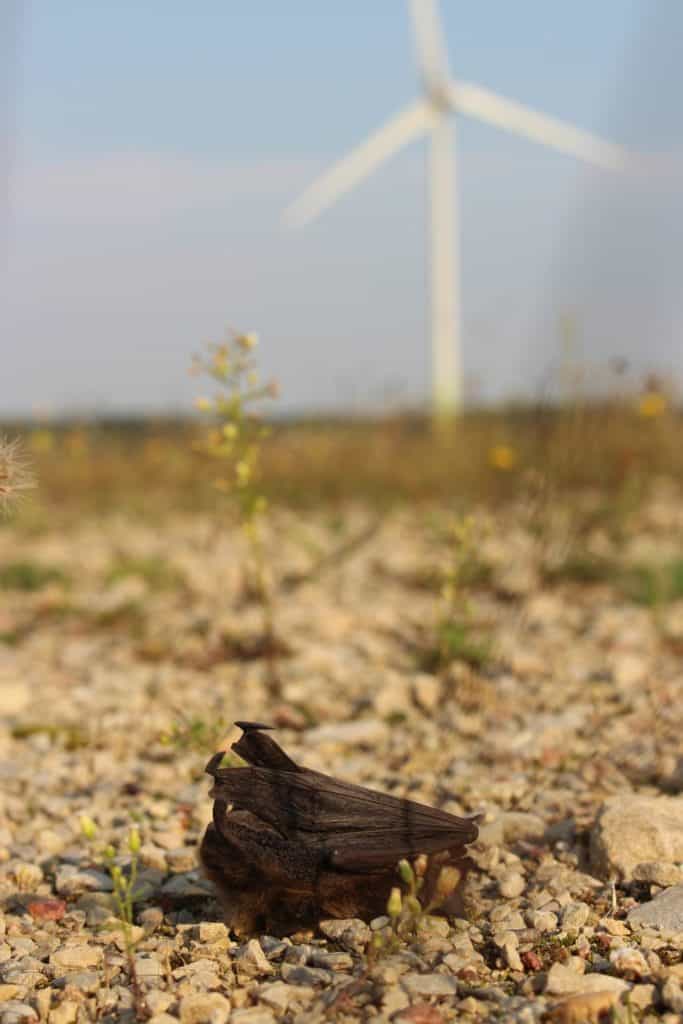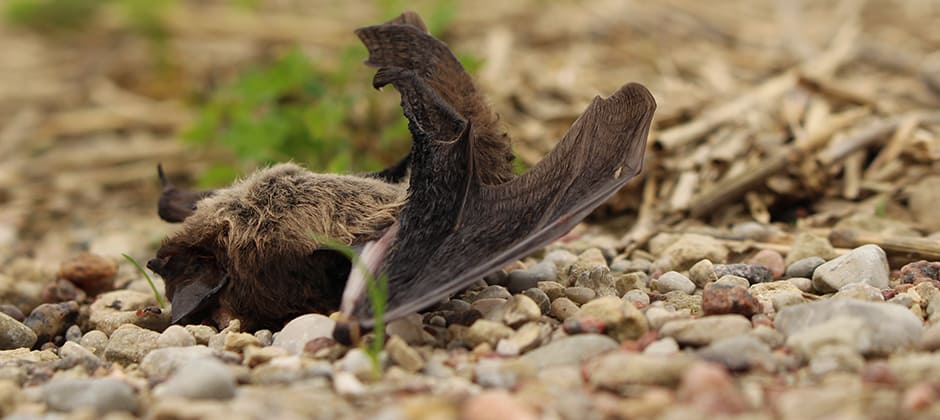Share this article
Loss of bats at turbines means loss of ecosystem services
As wind energy development increases around the world, the spinning turbines can be deadly to bats, and the ecosystem services that bats provide—like pest control—are lost with them.
Researchers in Germany already knew that bats that forage in open spaces face high collision risks at wind turbines. “But the secondary fact with these individuals is, you also lose important members of their corresponding food webs,” said Christian Voigt, the head of the department of evolutionary ecology at the Leibniz Institute for Zoo and Wildlife Research.
Many bats that forage around wind turbines are insectivores, and their pest eating provides a natural service to farmers. Voigt led a study published in Conservation Science and Practice looking at how much the death toll of common noctule (Nyctalus noctula) bats at wind turbines in Germany affects the ecosystem services they provide.
“I want to draw the attention of people to something that’s related to agricultural crop production,” he said, “because we are not only dealing with bat individuals themselves but also the ecosystems that are suffering.”
Voigt and his team conducted the study during August and September—the peak time of the bats’ migration. They obtained 17 fresh bat carcasses from a governmental repository, where carcasses found at wind turbines are collected. Because bats and their stomach contents decompose quickly, it was important for researchers to work with fresh kills. They analyzed stomach contents, using a genetic analysis to identify the insect species the bats had eaten before they died.

Wind turbines don’t only kill bats. They can also deter them from the area. Credit: Christian Voigy/Leibniz-IZW
The team found that 20% of the insects consumed were pests that cause damage not only to agricultural land but to trees as well. Those included species like the chestnut weevil (Curculio elephas) and the chestnut tortrix (Cydia splendana). Since those are species that are active at night when bats are active, Voigt said, only bats can control them.
“Diurnal taxa can’t do the same job,” he said.
The effects can be broader than the bats that are killed. Turbines can also repel bats. And while European regulations require energy companies to curtail activities while bats are migrating, older turbines aren’t included. If people aren’t motivated to protect bats, Voigt hopes they will be motivated to protect agriculture.
“Some people don’t care about bats, and yes, I can’t do anything about this,” Voigt said. “But if you lose this trophic interaction, in case you think about monetary things, it’s important to keep in mind we lose a benefit that’s basically measured in your wallet.”
Header Image: A bat carcass lies under a wind turbine. Researchers found that bat deaths at turbines can mean less natural pest control. Credit: Christian Voigt/Leibniz-IZW








